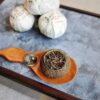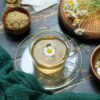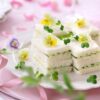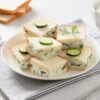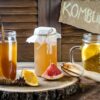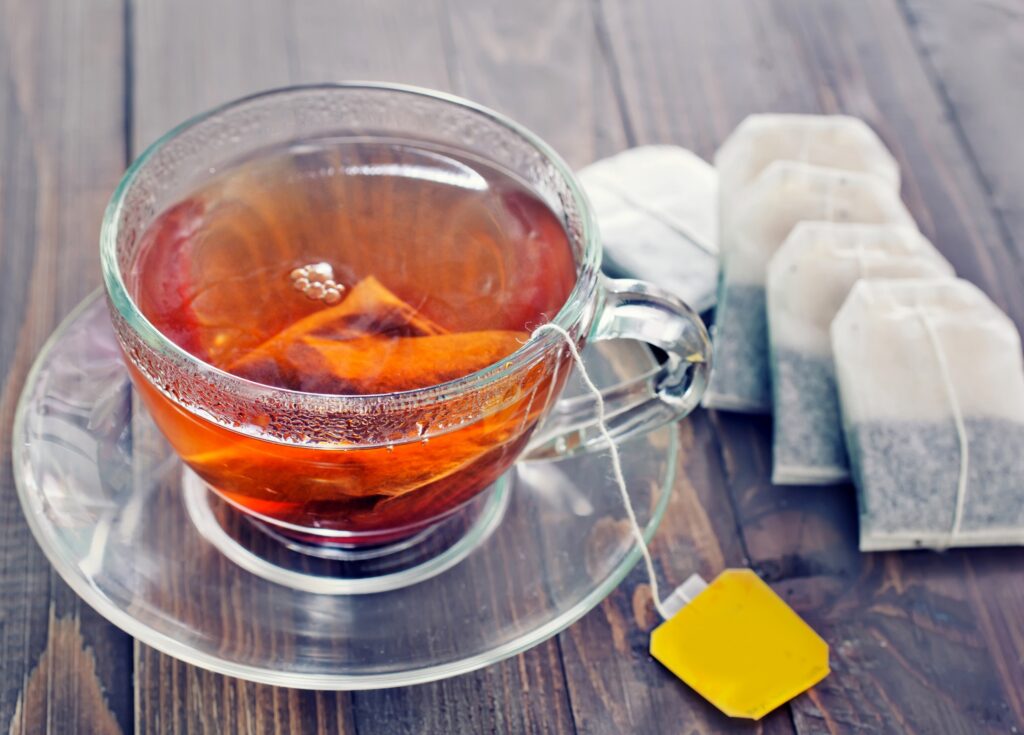
Welcome to the ultimate guide to tea bags – the only resource you’ll ever need to brew the perfect cup of tea every time. Whether you’re a tea aficionado or just dipping your toes into the world of tea, this comprehensive guide will take you on a journey through the art of tea bag brewing.
Here we’ll explore the different types of tea bags available, demystify the brewing process, and share expert tips to enhance the flavor and aroma of your favorite cuppa. From black teas to herbal infusions, we’ll cover it all.
You’ll discover the secrets to steeping tea bags for the ideal amount of time, the optimal water temperature for different tea varieties, and how to choose the right type of tea bag for your taste preferences. We’ll even unveil some creative ways to reuse tea bags and reduce waste.
So grab your favorite mug and get ready to embark on a tea-sipping adventure like no other! Let’s dive into the world of tea bags and uncover the secrets to brewing the perfect cup every time.
The History of Tea Bags
Tea has been enjoyed for centuries, but the invention of the tea bag is a relatively recent development in the world of tea. The first tea bags were created in the early 20th century, and their popularity quickly spread. Before tea bags, loose tea leaves were the norm, requiring a tea strainer or infuser to enjoy a cup of tea.
The idea of the tea bag is credited to a New York tea merchant named Thomas Sullivan, who sent tea samples to his customers in small silk bags. Some customers mistakenly assumed that the bags were meant to be steeped along with the tea leaves, and thus the concept of the tea bag was born.
As time went on, tea bags evolved from silk to more affordable and accessible materials such as paper and, eventually, the familiar porous bags we use today. Tea bags revolutionized the way people enjoyed tea, providing a convenient and mess-free alternative to loose leaf tea.
Types of Tea Bags and Their Benefits
When it comes to tea bags, there is a wide variety to choose from. Each type of tea bag has its unique characteristics and benefits. Let’s explore some of the most popular options:
- Paper Tea Bags: These are the most common type of tea bags found in supermarkets. They are affordable, easy to use, and allow water to flow through the bag, extracting the flavors of the tea leaves. However, paper tea bags can sometimes impart a subtle paper taste to the tea.
- Silk Tea Bags: Silk tea bags are often considered a luxury option. They are more expensive than paper tea bags but are known for their superior quality. Silk allows for a better infusion and enhances the flavors of the tea. Many tea connoisseurs prefer silk tea bags for a more refined tea-drinking experience.
- Mesh Tea Bags: Mesh tea bags are made from a fine mesh material and provide a balance between affordability and quality. They allow water to flow through the bag, giving the tea leaves ample room to expand and release their flavors. Mesh tea bags are a popular choice for everyday tea drinkers.
- Biodegradable Tea Bags: With the growing concern for the environment, biodegradable tea bags have gained popularity. These bags are made from plant-based materials that break down easily in composting systems. They offer a guilt-free option for tea lovers who want to minimize their environmental impact.
Choosing the right type of tea bag depends on your personal preferences and priorities. Consider factors such as flavor extraction, convenience, and environmental impact when making your selection.
How to Choose the Right Tea Bags for Your Taste Preferences
The flavor profile of your tea can vary greatly depending on the type of tea bag you choose. Here are some tips to help you select the right tea bags for your taste preferences:
- Black Tea Lovers: If you enjoy a robust and full-bodied cup of tea, opt for paper or mesh tea bags. These types of tea bags allow for a stronger infusion, resulting in a bolder flavor. Look for tea bags that use high-quality black tea leaves to ensure a rich and satisfying brew.
- Green Tea Enthusiasts: Green tea is delicate and requires a more gentle brewing process. To preserve the delicate flavors and aromas of green tea, choose silk or mesh tea bags. These types of tea bags provide better control over the brewing process and prevent over-extraction, resulting in a smoother and more nuanced cup of green tea.
- Herbal Tea Aficionados: Herbal teas come in a wide range of flavors and ingredients. To fully enjoy the diverse flavors of herbal infusions, opt for mesh or biodegradable tea bags. These bags allow the ingredients to fully expand and release their flavors, ensuring a fragrant and flavorful cup of herbal tea.
Remember, taste is subjective, and experimentation is key. Don’t be afraid to try different types of tea bags and explore the wide world of flavors that tea has to offer.
The Proper Water Temperature and Steeping Time for Different Types of Tea
When it comes to brewing the perfect cup of tea, water temperature and steeping time are crucial factors that can make or break the flavor profile. Each type of tea requires specific conditions to bring out its best qualities. Let’s delve into the ideal water temperature and steeping time for various tea varieties.
- Black Tea: Black tea is known for its robust flavor and deep color. To bring out the best in black tea, use water that has been heated to a rolling boil, typically around 212°F (100°C). Steep the tea bag for 3-5 minutes, depending on your preference for strength. Remember, oversteeping black tea can result in a bitter taste.
- Green Tea: Green tea is delicate and requires a lower water temperature to prevent it from becoming bitter. Heat the water to around 175°F (79°C) and steep the tea bag for 2-3 minutes. Adjust the steeping time based on your desired strength. Be cautious not to use boiling water, as it can scorch the leaves and result in a bitter brew.
- Herbal Tea: Herbal teas encompass a wide range of flavors and ingredients. For most herbal teas, a water temperature of 200°F (93°C) works well. Steep the tea bag for 5-7 minutes, or longer for a stronger infusion. Herbal teas are more forgiving when it comes to steeping time, so feel free to experiment and find your preferred taste.
- White Tea: White tea is known for its delicate and subtle flavors. Use water heated to around 175°F (79°C) and steep the tea bag for 2-3 minutes. As with green tea, be mindful of using boiling water, as it can overpower the delicate flavors of white tea.
By following these guidelines, you’ll be able to brew each type of tea to perfection, ensuring a delightful and satisfying cup every time.
Enhancing the Flavor of Your Tea with Add-Ins and Garnishes
While tea is delicious on its own, adding a splash of creativity can take your cuppa to the next level. Here are some add-ins and garnishes that can enhance the flavor and visual appeal of your tea:
- Honey: A natural sweetener, honey adds a touch of sweetness and depth to your tea. Experiment with different varieties of honey to discover unique flavor combinations. Add a teaspoon of honey to your tea and stir until dissolved.
- Lemon: A squeeze of fresh lemon juice can brighten the flavors of your tea, especially black and herbal varieties. Lemon adds a refreshing tang that complements the natural flavors of tea. Add a wedge of lemon to your cup or squeeze a few drops of juice.
- Mint: Fresh mint leaves provide a burst of freshness and a hint of coolness to your tea. Mint pairs well with green and herbal teas, adding a refreshing twist. Crush a few mint leaves and add them to your cup before steeping.
- Cinnamon: Cinnamon sticks or ground cinnamon can add a warm and comforting flavor to your tea. This spice works well with black tea and herbal infusions, such as chai. Add a cinnamon stick or a sprinkle of ground cinnamon to your tea while steeping.
Don’t be afraid to experiment and find your own favorite combinations. These add-ins and garnishes can elevate the flavors of your tea and make each sip a delightful experience.
Common Mistakes to Avoid When Brewing Tea with Tea Bags
While brewing tea with tea bags seems straightforward, there are some common mistakes that can negatively impact the taste and overall experience. Here are a few pitfalls to avoid:
- Using water that is too hot: Boiling water can scorch the tea leaves, resulting in a bitter taste. Ensure that the water temperature is appropriate for the type of tea you’re brewing. Refer to the previous section for specific guidelines.
- Oversteeping: Leaving the tea bag in the water for too long can lead to a bitter and astringent brew. Follow the recommended steeping times provided earlier, and adjust based on your personal preference.
- Not using enough tea bags: Using too few tea bags can result in a weak and watered-down cup of tea. Follow the instructions on the packaging or use one tea bag per cup for a robust flavor.
- Storing tea bags improperly: Exposure to air, moisture, and strong odors can diminish the quality and flavor of tea bags. Store them in an airtight container away from sunlight, heat, and strong odors to maintain freshness.
By avoiding these common mistakes, you’ll be able to enjoy a consistently delicious cup of tea with every brew.
Tea Bag Storage and Shelf Life
Tea bags, like any other food or beverage product, have a shelf life. While they don’t spoil like perishable items, their flavor and quality can degrade over time. Proper storage is key to preserving the freshness and taste of tea bags.
- Storage containers: Transfer your tea bags to an airtight container once opened. This helps protect them from exposure to air, moisture, and odors. Glass jars or tin containers with tight-fitting lids work well for this purpose.
- Avoid light and heat: Keep your tea bags away from direct sunlight and heat sources, as these can accelerate flavor degradation. Choose a cool, dark cupboard or pantry for storage.
- Rotate stock: If you have multiple boxes of tea bags, use the oldest ones first. This ensures that you’re always consuming tea bags at their peak freshness.
- Check for freshness: Over time, tea bags may lose their flavor and aroma. If your tea bag has a noticeably dull smell or taste, it may be time to replace it.
While tea bags generally have a shelf life of 6-12 months, it’s important to note that this can vary depending on the type and quality of tea. Always check the packaging for specific recommendations and consume tea bags within the suggested time frame for the best flavor experience.
Tea Bag Alternatives for Eco-Conscious Tea Drinkers
If you’re passionate about reducing waste and minimizing your environmental footprint, there are alternative options to traditional tea bags that can help you enjoy your tea sustainably. Here are a few eco-conscious alternatives:
- Loose Leaf Tea: Loose leaf tea offers a more environmentally friendly option, as it eliminates the need for single-use tea bags. Invest in a quality tea infuser or teapot with a built-in strainer to steep loose leaf tea with ease.
- Biodegradable Tea Bags: Look for tea bags made from biodegradable materials, such as plant-based fibers or compostable paper. These tea bags break down naturally over time, reducing their impact on the environment.
- Reusable Tea Bags: Reusable tea bags made from fabric or silicone are a great option for those who want to enjoy the convenience of tea bags while minimizing waste. Simply fill the bag with your favorite loose leaf tea, steep, and wash for reuse.
- Tea Sachets: Tea sachets are larger, roomier versions of tea bags that allow the tea leaves to expand fully. These sachets are often made from biodegradable materials and can be filled with loose leaf tea for a more sustainable tea experience.
By opting for these eco-friendly alternatives, you can enjoy your tea guilt-free while contributing to a cleaner and greener planet.
Enjoying the Perfect Cup of Tea with Tea Bags
Brewing the perfect cup of tea with tea bags is an art that anyone can master. By understanding the ideal water temperature and steeping time for different tea varieties, enhancing the flavor with add-ins and garnishes, avoiding common brewing mistakes, and storing tea bags properly, you can ensure a delightful tea-drinking experience every time.
For those looking to reduce waste and embrace eco-conscious alternatives, options like loose leaf tea, biodegradable tea bags, reusable tea bags, and tea sachets provide sustainable choices without compromising on taste.
So, whether you’re sipping a soothing cup of herbal infusion or indulging in the rich flavors of black tea, remember that the secret to the perfect cup lies in the details. With this ultimate guide to tea bags, you’re equipped with the knowledge and tips to brew a tea that delights your taste buds and warms your soul. Cheers to the perfect cup of tea!

